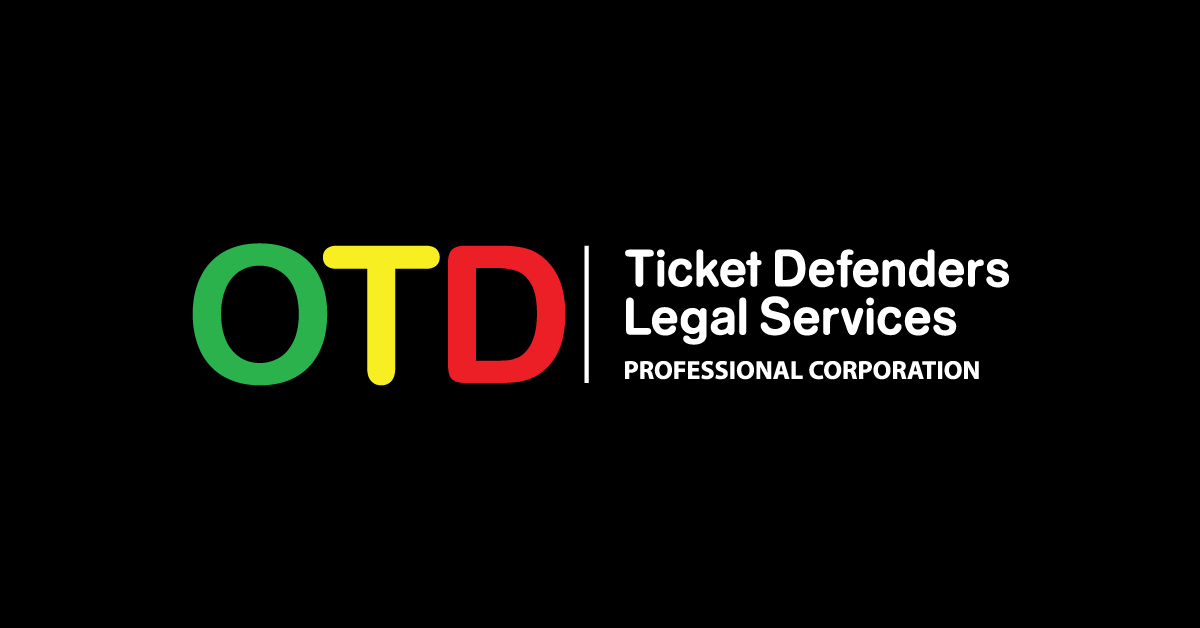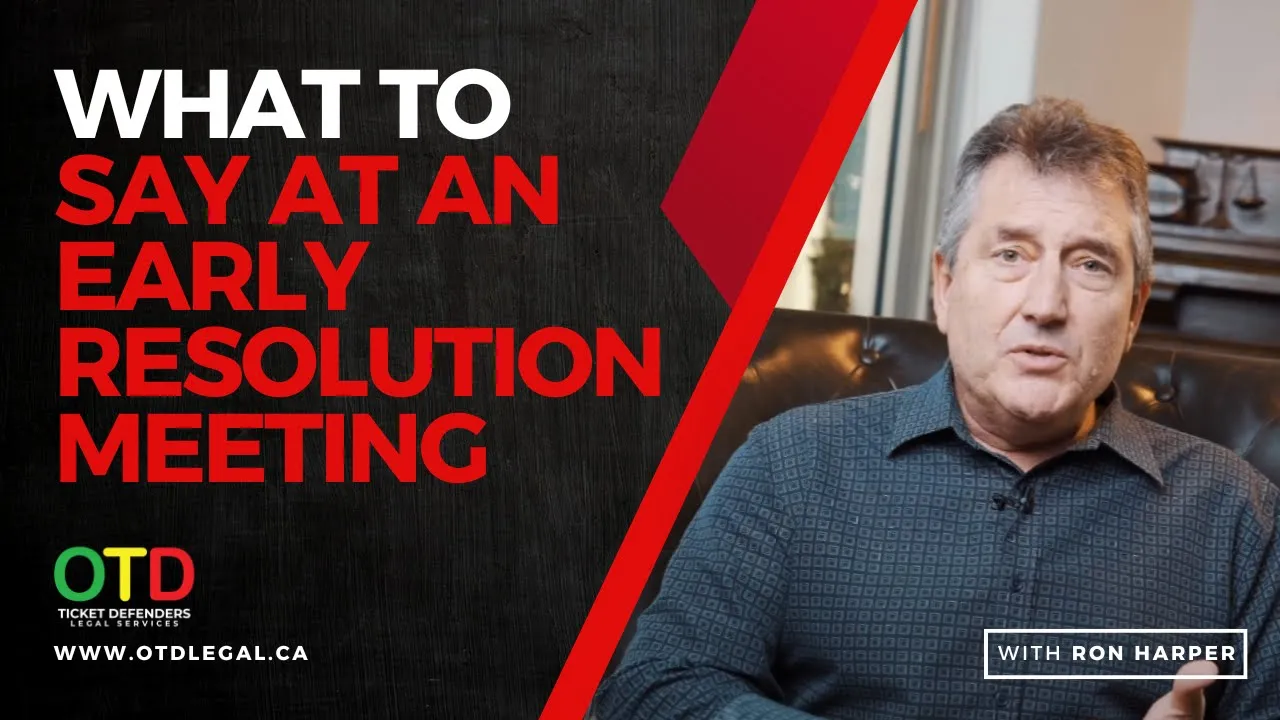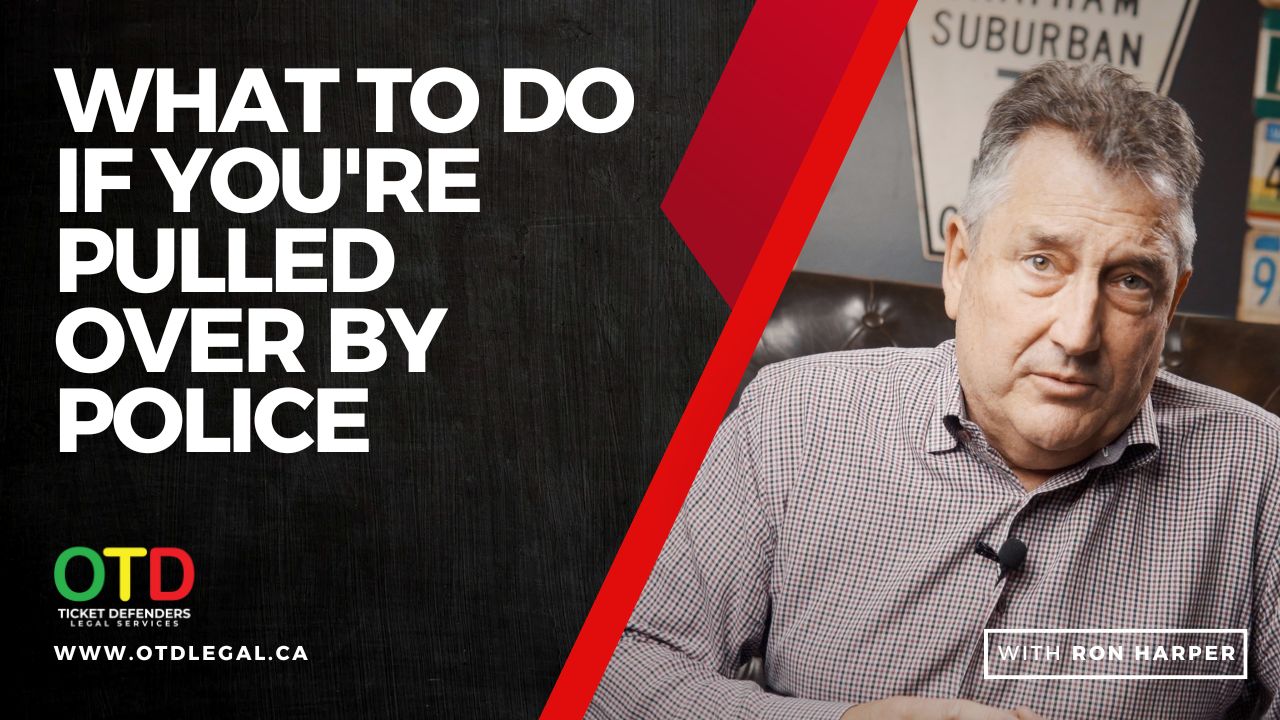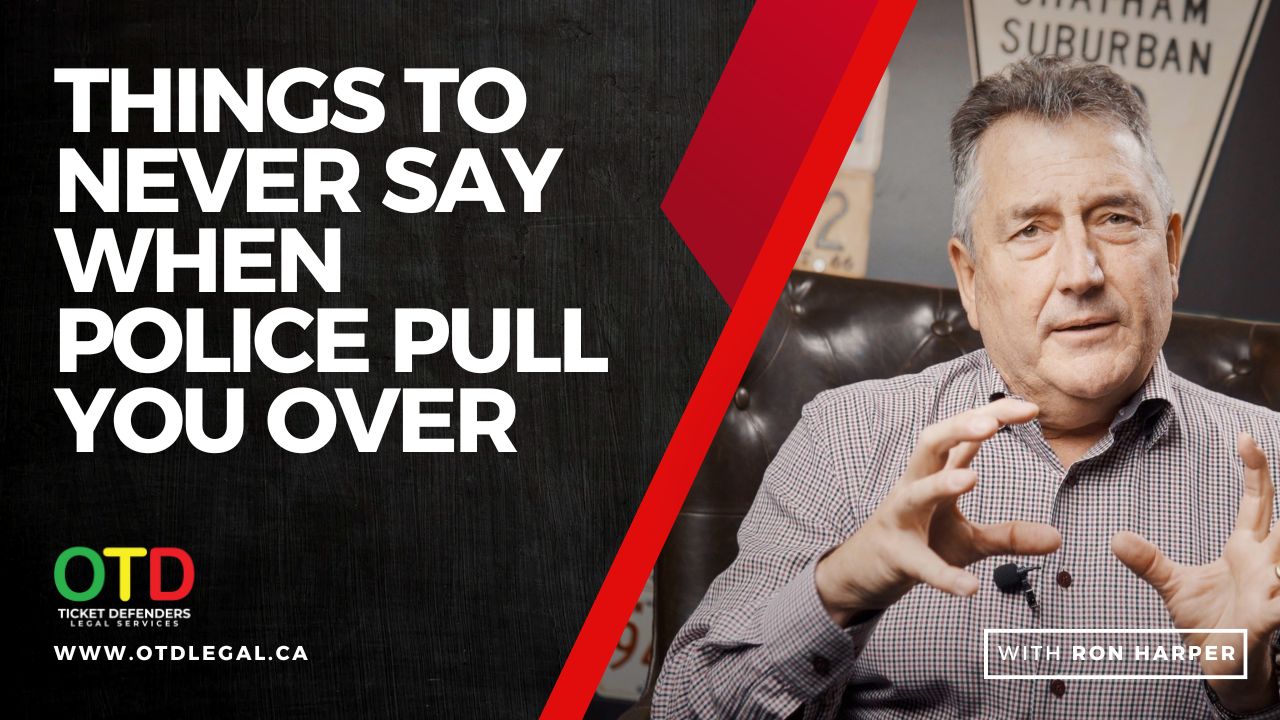Modern cars have come a long way since they were first invented. Among the various electronic wonders such as your car being able to tell you when you’re leaving your lane or following too closely, there is no simpler safety device than the seat belt. Seat belt use saves lives. Not only can your seat belt save your life, but it is also the law. Every day Ontario’s city police and OPP patrol our roadways watching out for drivers that don’t wear their seat belt.
Perhaps you forgot to buckle up. Maybe you don’t like the way it feels or have a medical condition that prevents seat belt use. Or possibly you just don’t want to. Setting aside your personal safety and looking strictly at protecting yourself legally: what do you need to know? What penalties are you facing if you’re charged by the police and what can you do to fight your seat belt ticket?
Let’s take a look!
What Is Seat Belt Law In Ontario?
The Canadian Safety Council has taken a look at information from Transport Canada regarding seat belt use. At the time of the article being written, 93% of Canadians use their seat belts. That’s a very good compliance rate in buckling up. However, the much more important statistic came from those Canadians that don’t use their seat belts. Of the 7% of Canadians that don’t use their seat belts, they represented 40% of the fatalities in vehicle collisions. If seat belt use had no beneficial impact on preventing death, we would expect the chance of non-seat belt wearing individuals to be the same and only represent 7% of fatalities rather than 40%. That is a staggering statistic that clearly shows that seat belts save lives.
In Canada, all provinces and territories have laws requiring the use of seat belts. Ontario was the first jurisdiction in Canada to enact a seat belt law on January 1, 1976. Beyond seat belt laws for people that drive a vehicle, there are also laws for passengers to wear seat belts and laws for the proper safety restraint of young children and infants.
In Ontario, seat belt laws fall under section 106 of the Highway Traffic Act (HTA). The first section of this area of law is HTA s.106(1) that deals with the presence or functionality of a seat belt. This area of law looks at vehicles which at their time of being manufactured or imported into Canada were required to have a seat belt assembly under the rules of Canada’s Motor Vehicle Safety Act. For any vehicles included in this definition it is illegal to remove, render partly or wholly inoperative, modify the effectiveness of, or permit to not operate properly through lack of maintenance the required seat belt:
Seat belt assembly must not be removed or altered
106 (1) No person shall drive on a highway a motor vehicle in which a seat belt assembly required under the Motor Vehicle Safety Act(Canada) at the time that the vehicle was manufactured or imported into Canada has been removed, rendered partly or wholly inoperative, modified so as to reduce its effectiveness or is not operating properly through lack of maintenance. 2006, c. 25, s. 1.
Ontario’s Highway Traffic Act has multiple laws dealing with the proper use of seat belts and child safety restraints. The most common legal requirement that most people would be familiar with, is the requirement for anyone driving a vehicle to wear a seat belt. This law falls under HTA s.106(2) which quite simply states that if you are the driver of a vehicle on an Ontario roadway, you need to properly wear a functional seat belt:
Use of seat belt assembly by driver
(2) Every person who drives on a highway a motor vehicle in which a seat belt assembly is provided for the driver shall wear the complete seat belt assembly as required by subsection (5). 2006, c. 25, s. 1.
However, it’s not just driver’s that need to buckle up! Passengers also have a legal responsibility when it comes to seat belt use. The legal requirements under Ontario’s Highway Traffic Act fall under two sections of law. For adult passengers (16 years of age or older), the first legal responsibility is that they must be seated in the vehicle in a location that has a seat belt:
Use of seat belt assembly by passenger
(3) Every person who is at least 16 years old and is a passenger in a motor vehicle on a highway shall,
(a) occupy a seating position for which a seat belt assembly has been provided;
The next legal requirement, is that an adult passenger must also be wearing the seat belt that is provided for them in the location that they are seated. However, simply wearing the seat belt is not sufficient. The passenger must also be wearing the seat belt correctly as prescribed under HTA s.106(5):
Use of seat belt assembly by passenger
(3) Every person who is at least 16 years old and is a passenger in a motor vehicle on a highway shall,
(b) wear the complete seat belt assembly as required by subsection (5). 2006, c. 25, s. 1.
All of the laws that we have discussed so far deal with an adult driver or passenger. If these adults fail to obey the law, they risk being charged by the police. But what about younger passengers who are under the age of 16? Can they be charged? Or is the driver of the vehicle responsible for them? The answer is the latter: the driver of a vehicle has the responsibility to ensure that all passengers under the age of 16 are either properly wearing a seat belt or are properly restrained in a child seating system or child restraint system.
Similar to the legal requirements of adult passengers, HTA 106(4) requires that the driver of a vehicle insure that two conditions are met for young passengers. HTA s.106(4)(a)(i) is the legal requirement that the young passenger be seated in a location that has a seat belt:
Driver to ensure young passenger uses seat belt assembly
(4) No person shall drive on a highway a motor vehicle in which there is a passenger who is under 16 years old unless,
(a) that passenger,
(i) occupies a seating position for which a seat belt assembly has been provided,
The second legal requirement is that the driver of the vehicle must also ensure that the young passenger is wearing the seat belt provided for them in the location that they are seated. That seat belt must also be worn properly as described in HTA s.106(5):
Driver to ensure young passenger uses seat belt assembly
(4) No person shall drive on a highway a motor vehicle in which there is a passenger who is under 16 years old unless,
(a) that passenger, […]
(ii) is wearing the complete seat belt assembly as required by subsection (5)
The final area of law regarding young passengers are for those that are required to be secured by a child seating system or child restraint system. This is the responsibility of the driver of the vehicle:
Driver to ensure young passenger uses seat belt assembly
(4) No person shall drive on a highway a motor vehicle in which there is a passenger who is under 16 years old unless, […]
(b) that passenger is required by the regulations to be secured by a child seating system or child restraint system, and is so secured. 2006, c. 25, s. 1.
The Ministry of Transportation provides a helpful guide in what to look for when purchasing a child car seat or booster. They also provide another helpful guide on the installation of child car seats.
How To Properly Wear A Seat Belt In Ontario
A number of the areas of seat belt law that we have discussed state that it is not only required that a driver or passenger wear a seat belt, but that the seat belt must be worn properly. The referenced piece of law is HTA s.106(5) which has 4 requirements for the lawful, proper method wearing a seat belt:
How to wear seat belt assembly
(5) A seat belt assembly shall be worn so that,
(a) the pelvic restraint is worn firmly against the body and across the hips;
(b) the torso restraint, if there is one, is worn closely against the body and over the shoulder and across the chest;
(c) the pelvic restraint, and the torso restraint, if there is one, are securely fastened; and
(d) no more than one person is wearing the seat belt assembly at any one time. 2006, c. 25, s. 1.
Do I Always Have To Wear A Seat Belt While Driving?
Yes. The only exemptions to the mandatory use of seat belts in Ontario for adult drivers or passengers are those described under HTA s.106(6):
Exceptions to Wearing a Seat Belt
(6) Subsections (2) and (3) do not apply to a person,
(a) who is driving a motor vehicle in reverse;
(b) who holds a certificate signed by a legally qualified medical practitioner certifying that the person is,
(i) for the period stated in the certificate, unable for medical reasons to wear a seat belt assembly, or
(ii) because of the person’s size, build or other physical characteristic, unable to wear a seat belt assembly; or
(c) who is actually engaged in work which requires him or her to alight from and re-enter the motor vehicle at frequent intervals and the motor vehicle does not travel at a speed exceeding 40 kilometres per hour. 2006, c. 25, s. 1.
For young passengers, the driver of the vehicle is not required to ensure that they are wearing a seat belt (for the requirements of HTA s.106(4)(a)) under the following specific exemption:
(7) Clause (4) (a) does not apply in respect of a passenger if the passenger holds a certificate signed by a legally qualified medical practitioner certifying that the passenger is,
(a) for the period stated in the certificate, unable for medical reasons to wear a seat belt assembly; or
(b) because of the person’s size, build or other physical characteristic, unable to wear a seat belt assembly. 2006, c. 25, s. 1.
What Are The Penalties For Not Wearing A Seat Belt?
There are generally two ways that you can be charged with a seat belt offence in Ontario. The first is by way of “a ticket.” A ticket will contain your personal information (such as full legal name, date of birth, address, and driver’s license number), as well as your offence information. A ticket also shows your set fine of $200.00 plus a $35.00 victim fine surcharge and a $5.00 court cost for a total payable fine of $240.00. What the ticket doesn’t show is how many demerit points will be applied against your license if you are convicted, or whether those demerit points will cause a suspension of your driver’s license. A ticket also contains no information as to how a conviction will impact your insurance rate.
The second way of being charged with a seat belt offence is by way of “a summons.” A summons contains the same information as a ticket with the exception of the fine amount. In the case of a summons, the fine owed to the court upon conviction would range between $200.00 and $1,000.00 plus the victim fine surcharge. A summons also lists your mandatory first appearance court date that either you or your legal representative must attend. Unlike simple tickets which are argued by a Municipal Prosecutor at court, charges issued by way of a summons are argued by a Provincial Crown Prosecutor at court; these cases are generally more involved and take longer to resolve at court.
Demerit Points
Demerit point penalties depend upon which sub-section of HTA s.106 that you’ve been charged under:
106(1) – 0 demerit points
106(2) – 2 demerit points
106(3)(a) – 0 demerit points
106(3)(b) – 0 demerit points
106(4)(a)(i) – 2 demerit points
106(4)(a)(ii) – 2 demerit points
106(4)(b) – 2 demerit points
CVOR Points
Commercial motor vehicle (CMV) drivers have to be even more careful if they have been charged by the police. Just like a regular driver, they need to protect their demerit points, driving record, and insurance. However, they also need to be careful of their employer’s record and the employer’s CVOR points. If the police officer has included the employer’s CVOR number on the offence notice, the employer would also be facing the following CVOR point penalties depending on what sub-section of HTA s.106 was used:
106(1) – 1 CVOR points
106(2) – 1 CVOR points
106(3)(a) – 0 CVOR points
106(3)(b) – 0 CVOR points
106(4)(a)(i) – 1 CVOR points
106(4)(a)(ii) – 1 CVOR points
106(4)(b) – 1 CVOR points
How Can I Fight My Seat Belt Ticket?
By far the easiest, low-stress, and most cost-effective way to fight a seat belt charge is with a licensed and experienced paralegal. Like lawyers, paralegals are licensed through the Law Society. They know the law and they know the court process. They will also have a general knowledge of the prosecutor, police officer, and Justice of the Peace that will be involved in your case. Many seat belt cases can be argued by your paralegal without you ever needing to step foot in a courtroom or ever needing you to fill out a court document. Let your paralegal take care of the details and reduce the stress that naturally occurs with being charged by the police.
Have You Been Charged With Failure To Wear A Seatbelt In Onatrio?
If you’ve been charged with failure to wear a seatbelt in Ontario you should contact us as soon as possible. We have skill and experience in helping people who have been charged with a seatbelt violation and provide free, confidential consultations to empower you to fight your charges. We help drivers throughout Ontario including Cambridge, Georgetown, London, Windsor and from our home office in Kitchener. Contact us online or call us directly at 1.844.647.6869 or text us a copy of your ticket to 226-240-2480.





